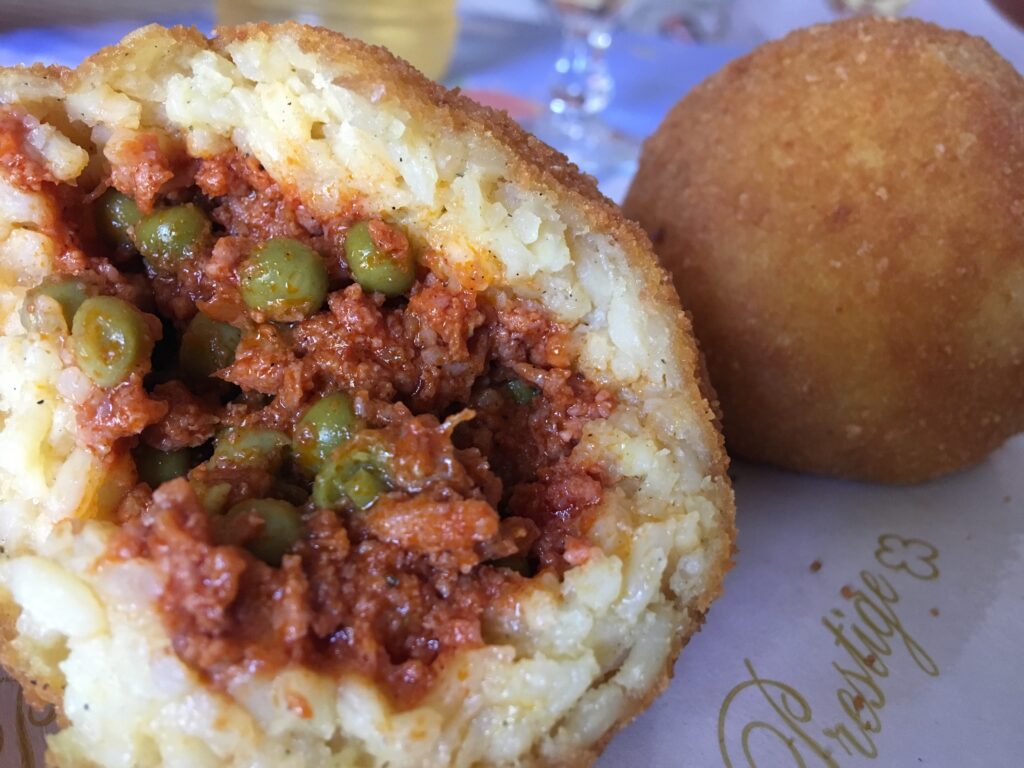The Sicilian arancino is a beloved culinary treasure that has captured the hearts and palates of food lovers worldwide. This iconic dish, a staple of Sicilian cuisine, is a delightful fusion of cultures and flavors, reflecting the island’s rich history and diverse influences.
Origins and Etymology
The origins of the arancino can be traced back to the 10th century, during the Arab rule in Sicily. It is believed that the dish was inspired by the Arabic tradition of stuffing cooked rice with various fillings, a practice that was later adapted and refined by the Sicilians.The name “arancino” (or “arancina” in the feminine form) derives from the Sicilian word “aranciu,” meaning “orange.” This name is a reference to the dish’s resemblance to the vibrant citrus fruit, both in its round shape and its golden-orange hue when freshly cooked.
Regional Variations
While the arancino is a beloved dish throughout Sicily, regional variations exist, each with its own unique characteristics. In the eastern part of the island, arancini are typically shaped like a cone, reminiscent of the iconic Mount Etna. In contrast, the western regions tend to favor the traditional round or oval shape.The fillings also vary from region to region, reflecting local preferences and culinary traditions. Some of the most common fillings include ragù (a rich meat sauce), peas, mozzarella, and caciocavallo cheese. However, more creative variations have emerged, incorporating ingredients like pistachios, mushrooms, and even chocolate.

The Art of Preparation
The preparation of the arancino is a labor of love, requiring patience and attention to detail. The process begins with cooking the rice, often infused with saffron for its distinctive aroma and color. The cooked rice is then cooled and combined with other ingredients, such as cheese, meat, or vegetables, depending on the desired filling.Once the filling is prepared, the rice mixture is carefully shaped into balls or cones, with the filling nestled inside. The arancini are then coated in breadcrumbs and deep-fried to perfection, resulting in a crispy, golden exterior that gives way to a delicious, savory interior.
Cultural Significance
The arancino holds a special place in Sicilian culture, representing not only a delicious culinary tradition but also a symbol of the island’s rich history and resilience. The dish is a testament to the diverse influences that have shaped Sicilian cuisine over the centuries, from the Arabs to the Greeks, Normans, and beyond.In recent years, the arancino has gained international recognition, with chefs and food enthusiasts around the world embracing this Sicilian delicacy. Its popularity has transcended borders, becoming a beloved dish in Italian communities worldwide and inspiring creative interpretations and variations.

The Recipe and Preparation
To prepare authentic Sicilian arancini, you’ll need the following ingredients:
- Arborio or Carnaroli rice
- Saffron
- Chicken or vegetable broth
- Onion, garlic, and other aromatics
- Tomato sauce or ragù
- Peas (optional)
- Mozzarella or caciocavallo cheese
- Breadcrumbs
- Eggs
- Olive oil or vegetable oil for frying
Here’s a basic overview of the preparation process:
- Cook the rice in the broth with saffron until al dente, then spread it out to cool completely.
- Prepare the filling by sautéing the aromatics and combining them with the cooked rice.
- Form the arancini by taking a portion of the rice mixture and shaping it into a ball or cone, leaving a hollow center.
- Stuff the hollow center with the desired filling, such as ragù, cheese, or a combination.
- Seal the arancino by covering the filling with more rice.
- Dip the arancini in beaten eggs and coat them with breadcrumbs.
- Deep fry the breaded arancini until golden brown and crispy.
Serve the arancini hot, garnished with fresh parsley or a sprinkle of grated cheese if desired. Enjoy this delicious Sicilian delicacy as an appetizer, snack, or even a main course!Whether you’re savoring an authentic arancino in a quaint Sicilian cafe or recreating this beloved dish in your own kitchen, the Sicilian arancino is a true celebration of flavors, history, and cultural heritage. It’s a delicious reminder of the rich tapestry that makes Sicilian cuisine so unique and captivating.
Share
Rewrite







